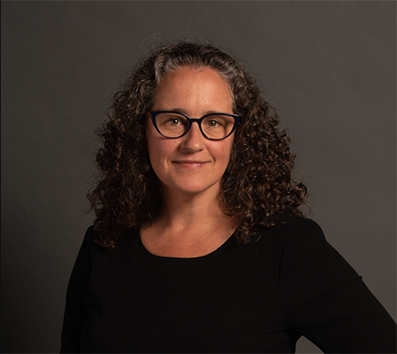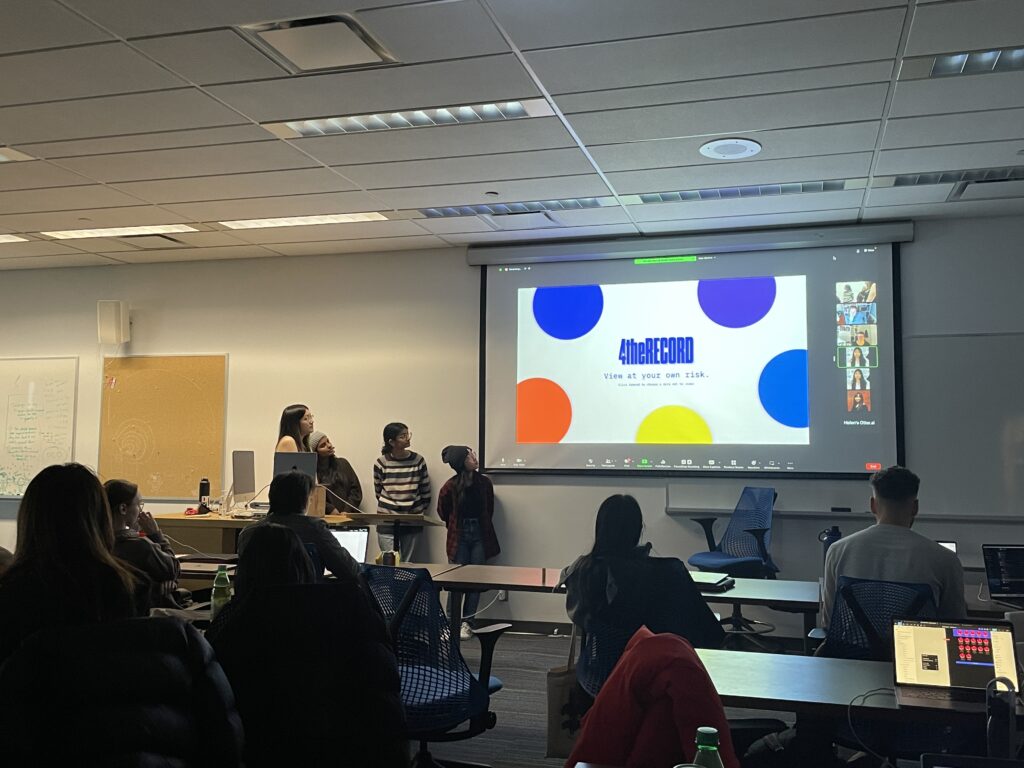
When a group of researchers approached Professor Angela Norwood to ask about hiring a few of her York University design students to provide data visualization for the results of one of their studies, Norwood saw an opportunity to provide the students with a career-enhancing experience.
In anticipation of Congress 2023, the annual meeting of the Federation for the Social Sciences & Humanities hosted by York, a research team led by York’s Laina Bay-Cheng and Sarah Flicker, along with Jen Gilbert, needed some visual help.
Their mixed-methods study looked at the risks to which LGBTQ and racialized young women ages 16 to 22 were exposed during COVID-19 in three cities: Melbourne, New York and Toronto. The researchers sent out surveys, conducted interviews and had the participants maintain timelines of their risk-taking behaviours. They wanted the resulting data to be translated into a pop-up display for Congress.

The team approached Norwood, who applied for an Academic Innovation Fund grant and created a special topics course, Representing Risk: A Physical and Virtual Pop-Up Gallery, which would turn students into consultants for the research team.
Twenty-three students registered for the course, which was designed as a vertical studio – meaning that design students from second to fourth years could enrol.
“It allowed students to mix with others from different years and offered an opportunity for everyone to contribute,” Norwood said.
“It was the perfect bridge between the worlds of design and education,” said Helen Han, a York master of fine arts graduate working toward a PhD in education, who Norwood hired as her research assistant for the project.
The researchers visited the class to present the data and discuss ways it could be shared with the study participants, other researchers and the public. They collaboratively decided on a website with interactive visuals from the data set and a pop-up gallery that could travel.

The students formed teams to work on various aspects of the project, often resulting in a fruitful mix of perspectives and collaboration.
“The youth in the class saw things differently than the older principal investigators, and they had to be open to new ways of seeing the data,” Norwood noted as an example.
The project resulted in a significant experiential education opportunity. “Professor Norwood made it possible for students to bring theory to life in class,” said Han.
“We allowed them space to reach their goal, and the work mirrored real life as professional designers,” said Norwood.
As for the end result? “They came up with totally dynamic, fantastic ideas, and any failures (problems) were just as interesting as the successes, because we learned a lot about collaborating with designers and about the data itself,” praised Gilbert. “The students amplified the voices of the young people in our research through their design choices.”
The pop-up exhibit was featured at Congress 2023 and will be viewed in the other cities involved in the study, too. The researchers held a launch for the exhibit, attended by their design partners, who are grateful for the collaboration.
“We’ll definitely always build a design element into future research projects,” said Gilbert. “We also learned that it would be valuable to collaborate with designers from the beginning, because their design thinking can help us hone our research questions.”
Norwood, too, is open to overseeing future collaborations between her students and researchers.
“It was very much about the process of getting to the final product,” Norwood said. “The students brought all their advanced technical skills to the project and left understanding more about teamwork, peer mentorship and social science methodology.
“They know more about themselves as designers and what design can contribute to projects like this.”
